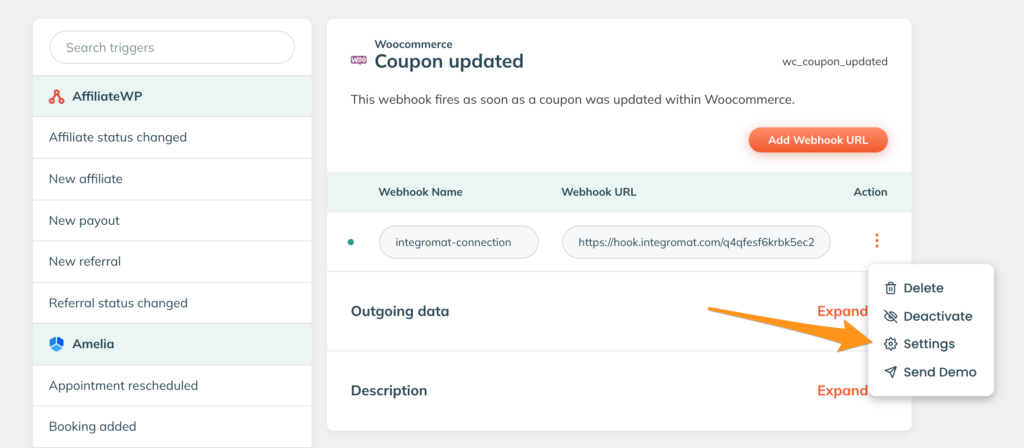This helpfile explains you the basics to connect WP Webhooks with Microsoft Power Automate.
If you want to learn more about how to receive data from Microsoft Power Automate, feel free to check out this manual.
Send Data within a Flows automation
If you are using the Flows feature of WP Webhooks, you can simply select the “Microsoft Power Automate” integration from the integration dropdown of any action you add. This allows you to add your Microsoft Power Automate webhook URL, which will then receive the data in return.
Send Data directly on a WordPress event
You can also create a direct connection between WordPress and Microsoft Power Automate by using our Trigger (Send Data) feature. This allows you to create direct connections to Microsoft Power Automate without the need of using a whole Flow.
It supports all of our available integrations.
How to set up the Microsoft Power Automate Webhooks extension
- To get started, please create a new Flow within Microsoft Power Automate.
- Once created, open up the Scenario and add your first module. This module is responsible for triggering this scenario.
- As the first module, please search for “HTTP” and select the “HTTP Request” module from Microsoft Power Automate.
After you added the module, Microsoft Power Automate will generate a receivable URL for you. Please place this URL into the WP Webhooks trigger of your choice.
To add it, please head over to your WordPress dashboard -> Settings -> WP Webhooks -> Webhooks -> Send Data, and add your webhook URL there.

Once this URL is added within your chosen trigger of WP Webhooks, you successfully created a connection between our plugin and Microsoft Power Automate.
At this point, every time your selected trigger is fired, Microsoft Power Automate will receive the data of that trigger and can use it to fire further actions.
Microsoft Power Automate requires a specific JSON schema when dealing with data. To make sure you add a correct one based on your required payload, you can use their feature “Use sample payload to generate schema” as seen in the screenshot above.
This allows you to retrieve a sample JSON response from our plugin either via the “Outgoing data” accordion, or by getting an actual payload from the logs (once your trigger fired for the first time).
You can also customize and filter the behavior of the trigger directly within WP Webhooks. To do that, simply open the settings next to the webhook URL inside of WP Webhooks and adjust the settings to your liking.

That’s it! You successfully set up your connection.
In case you would like to see any specific feature, you can request it here.
To access our Microsoft Power Automate extension you can click on the following link: https://wp-webhooks.com/integrations/microsoft-power-automate/